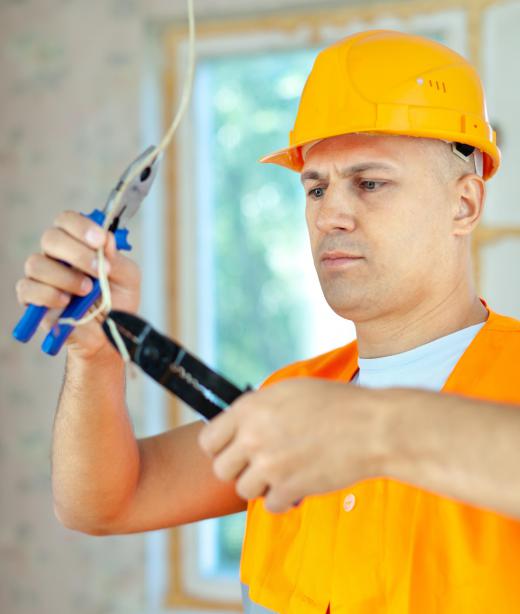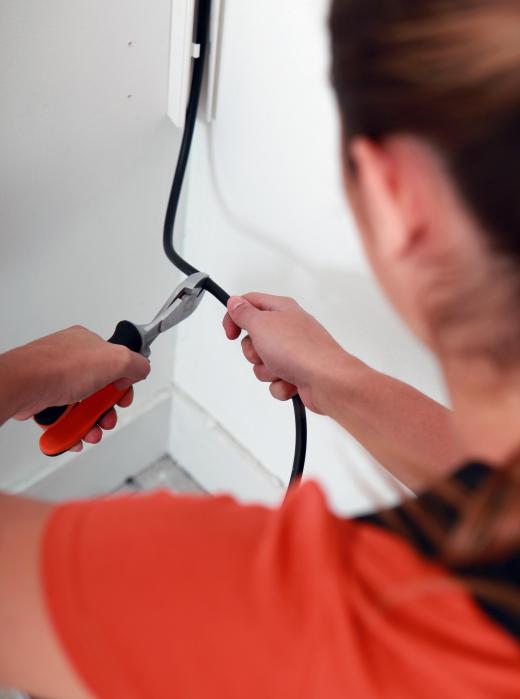Electrical wiring refers to the system of conductors and other devices that are used to carry electricity. The different types of electrical wiring that are used usually varies according to three factors: purpose, quantity of electricity to be carried, and location. For example, a home will require less power than an office building. This means that the appropriate electrical wiring system will typically try to maximize energy efficiency in a safe manner.
The wire itself is also known as an electrical conductor. It is commonly made of copper and other, similar materials that are good at transmitting current. The wire is usually insulated, in order to protect the conductor from becoming damaged. Insulation can be made from materials such as plastics and fibers. The type of insulation used usually depends on where the electrical wiring is to be installed.

There is an international standard for the types of wires and cables used in electrical wiring systems. This enables electricians and laymen to know what kind of wires comprise an electrical system. For example, color coating is employed to help identify wires for safety, installation, and repair purposes. These colors, however, are not the same everywhere. For example, a brown-colored wire usually denotes a live wire in European Union countries, Australia, and New Zealand. In contrast, a black brass color is used for these wires in the United States and Canada.

Stranded wires is a type of electrical wiring often employed in homes. This design consists of a number of small-gauge, solid wires that are wrapped around a central wire. The stranded wire can increase the amount of electrical power that can be carried in the wire. It is also commonly used because it is flexible and easy to shape, which is ideal for fitting electrical wiring behind the walls of homes.
Wiring systems that are located outside should be able to withstand the elements. Common insulators for outdoor wires include thermoplastics. Insulation on this type of system should also be resistant to ultra-violet rays.

Fiber-optic and wireless, or Wi-Fi, systems may change the future of electrical wiring in residential homes. For example, the traditional copper wire material could be replaced by fiber-optic systems, which use light pulses to carry electric current. The Wi-Fi system uses radio waves that are carried through the air, and are received by a central receiving connector. This application is already used by some home computers to allow Internet use and replace the need for modems and many connecting wires.
